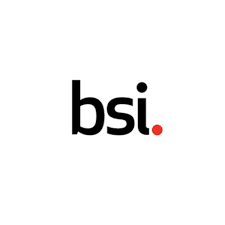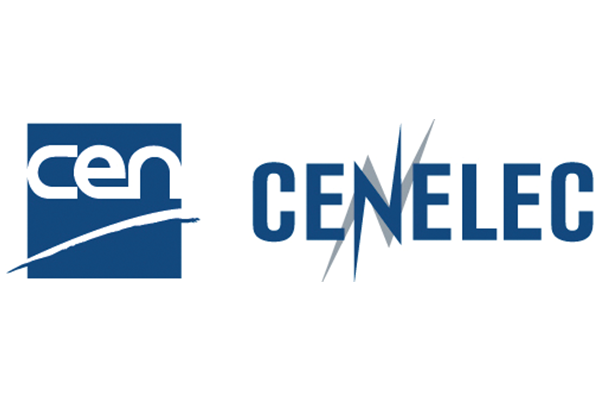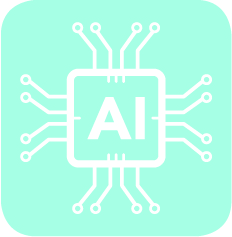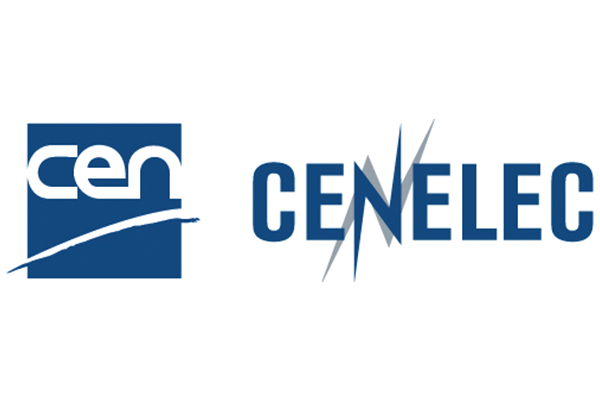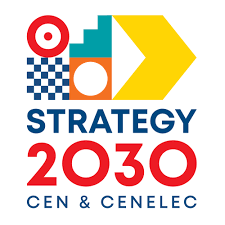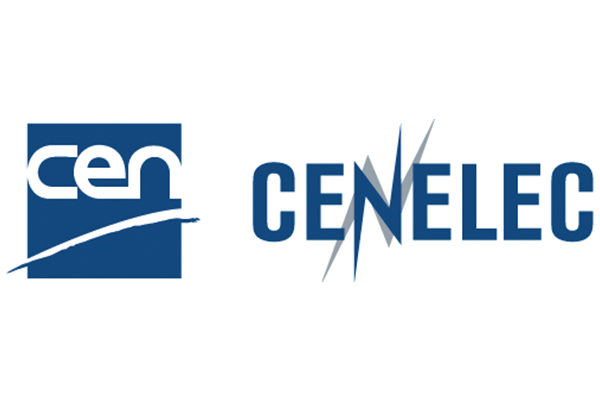The COVID-19 pandemic has had a huge impact on people and communities and BSI has developed a range of resources to support the fight against COVID-19. BSI know organizations are facing significant disruptions and challenges that they need to quickly manage and respond to, BSI is working closely with Governments, regulators, and organizations globally to share best practice and expertise, providing insight and information to help navigate the risks, mitigate crisis and enable resilience. Freely available resources available include safe working guidance, a report on working in the ‘new normal’ , and a range of webinars focussing on continuity, risk management, business continuity, community resilience and volunteers and the impact of Covid on manufacturing.
BSI also did a mapping exercise looking at the response of a range of countries in the Commonwealth - https://www.commonwealthstandards.net/news/covid-19-responses-update-as-of-22-march-2021-r53/
The new versions of two of the most important European standards for lifts (EN 81-20:2020 and EN 81-50:2020) have just been published in the Official Journal of the EU, ensuring their harmonization under the Lifts Directive. This can be the opportunity to explore more in detail the surprising and very important role of standards for lifts and elevators in the EU and on the global market.
European Standards for lifts and escalators: a Single Market Success story : In 1962, the European Committee for Standardization (CEN) established CEN/TC 10 on ‘Lifts, escalators and moving walks’ with the aim of agreeing on safety rules for the construction and installation of lifts, escalators, and passenger conveyors in the then European Community. The work of European standardization in this field has been particularly relevant in making the Single Market a reality through the adoption of Harmonised Standards. CEN successfully collaborates with the European institutions by creating the standards that implement the requirements introduced by the 'Lifts Directive 2014/33/EU' and 'Machinery Directive 2006/42/EC'. The Lifts Directive, whose latest version is applicable from 20 April 2016, harmonises the rules governing the design, manufacture, and installation of lifts. Its aim is to permit the free circulation of lifts within the EU internal market, ensuring a high level of safety for lift users as well as maintenance and inspection technicians. Similarly, the Machinery Directive harmonises the rules for escalators and other lifting appliances.
ETSI Report Paves the Way for First World Standards in Securing Artificial Intelligence
The ETSI Securing Artificial Intelligence Industry Specification Group (SAI ISG) released its first Group Report, ETSI GR SAI 004, which gives an overview of the problem statement regarding the securing of AI. ETSI SAI is the first standardization initiative dedicated to securing AI.
The Report describes the problem of securing AI-based systems and solutions, with a focus on machine learning, and the challenges relating to confidentiality, integrity and availability at each stage of the machine learning lifecycle. It also points out some of the broader challenges of AI systems including bias, ethics and ability to be explained. A number of different attack vectors are outlined, as well as several cases of real-world use and attacks.
To identify the issues involved in securing AI, the first step was to define AI. For the ETSI group, artificial intelligence is the ability of a system to handle representations, both explicit and implicit, and procedures to perform tasks that would be considered intelligent if performed by a human. This definition still represents a broad spectrum of possibilities. However, a limited set of technologies are now becoming feasible, largely driven by the evolution of machine learning and deep-learning techniques, and the wide availability of the data and processing power required to train and implement such technologies.
CEN and CENELEC launched a new Joint TC on Artificial Intelligence
Even though Artificial Intelligence (AI) has existed since the 1950s, the rapid developments in the past years have turned it into one of the most promising sectors within ICT. There has been an enormous growth in investments and use of AI systems in many sectors such as automobile, health and aeronautics, creating new challenges for both industry and society.
To ensure the development of trustworthy AI systems that respect fundamental values and human rights recognised in Europe, standardization is needed. For this reason, CEN and CENELEC have established the new CEN-CENELEC Joint Technical Committee 21 ‘Artificial Intelligence’, based on the recommendations presented in the CEN-CENELEC response to the EC White Paper on AI and the German Standardization Roadmap for Artificial Intelligence. The Joint Technical Committee, whose Secretariat is held by DS, the Danish Standardization Body, will be responsible for the development and adoption of standards for AI and related data, as well as provide guidance to other Technical Committees concerned with AI.
CEN - CLC/JTC 21 will proceed with the identification and adoption of international standards already available or under development from other organizations like ISO/IEC JTC 1 and its subcommittees, such as SC 42 Artificial Intelligence. Furthermore, CEN-CLC/JTC 21 will focus on producing standardization deliverables that address European market and societal needs, as well as underpinning EU legislation, policies, principles, and values.
European Commission, standards are crucial for European Climate Adaptation policy
On 24 February 2021 the European Commission adopted the new EU Strategy on Adaptation to Climate Change, which is setting the pathway to prepare for the unavoidable impacts of climate change in Europe. The Commission clearly states in the strategy that they intend to “increase cooperation with standardization organisations to make sure that existing standards are climate-proof and to develop new ones for climate adaptation solutions”.
CEN and CENELEC support the European effort to mitigate climate change, an also the preparation for its unavoidable consequences. Since the publication of the first EU adaptation strategy in 2013, CEN and CENELEC have been working closely with the European Commission on climate proofing the key infrastructures by revising the relevant priority standards. The first set of standards that include adaptation solutions from various sectors are being now finalised.
In addition to the extension of the activities of the CEN-CENELEC Adaptation to Climate Change Coordination Group, at the end of 2020 the new CEN/TC 467 ‘Climate Change’ was also established with the objective to develop European standards in support of the EU policy objectives. This clearly indicates the importance of climate change in the European standardization. An overview of CEN and CENELEC’s activities to support the efforts to mitigate climate change can be found on the policy paper “Standards in support of the European Green Deal Commitments”
ETSI Launches New Group on IPV6 Enhanced Innovation
In the 5G and cloud era, IPv6 will grow rapidly. Strengthening new generation IP network technologies based on IPv6 and its innovative technologies has become the common direction of the IP industry. To tackle the increasing Industry needs for IPv6 adoption in multiple Use Cases and Scenarios, ETSI has recently launched ISG IPv6 Enhanced innovation (IPE). IPE aims to drive full connectivity of IPv6 on everything and facilitate the business success of this technology. IPE members include 43 organizations to date, comprising carriers, vendors, and academia, working together to improve the industry ecosystem and accelerate innovation.
The group will first analyse the current landscape of existing IPv6 standards deployed on prime technologies such as 5G, IoT and Cloud Computing to identify gaps and thus accelerate IPv6-based innovations. Two other reports will cover data centre and Cloud use cases on one hand and 5G Transport use cases on the other hand. The last pieces of work will define Industrial IoT/enterprise requirements and IPv6 only transition requirements across new and evolving technology domains and areas.
Our world is changing faster than ever, driven by environmental and geopolitical changes and technological innovation. Such structural trends raise a variety of challenges across different regions and industries, and make for an unpredictable, at times even turbulent, market environment. However, these rapid changes also offer opportunities for growth and innovation. Through the new Strategy, the CEN and CENELEC community aims at “Building a safer, more sustainable and competitive Europe through European and International Standardization”. To achieve this, the organisations state as their mission: “through our stakeholders’ networks, we create consensus-based standards in order to generate trust, fulfil market requirements, enable market access and innovations for a better, safer and more sustainable Europe”.
The Strategy 2030 establishes a series of five goals that will guide CEN and CENELEC’s actions in the next decade:
- EU and EFTA recognize and use the strategic value of the European standardization system
- Our customers and stakeholders benefit from state-of-the-art digital solutions
- Increase the use and awareness of CEN and CENELEC deliverables
- The CEN and CENELEC system to be the preferred choice for standardization in Europe
- Strengthen our leadership and ambition at the international level
As a strategic framework for CEN, CENELEC and their respective members, the Strategy 2030 will provide a frame of reference to ensure complementarity, coherence and consistency across the strategic exercises and long-term objectives of all actors in the CEN and CENELEC community.
ETSI is pleased to unveil ETSI TS 119 182-1, a specification for digital signatures supported by PKI and public key certificates which authenticates the origin of transactions ensuring that the originator can be held accountable and access to sensitive resources can be controlled. This standard is a major achievement for interoperability of digital signatures for a range of applications in today's digital economy including the banking and financial world where so far, some 4,000 banks were using various signing algorithms for their APIs to secure their online transactions. Called JAdES, ETSI TS 119 182-1 comes in support of secure communications fulfilling the requirements of the European Union eIDAS Regulation (No 910/2014) for advanced electronic signatures and seals and regulatory requirements for services such as open banking.
This JAdES digital signature specification is based on JSON Web Signature and contains the features already defined in the related ETSI standards for AdES (advanced electronic signature/seal) applied to other data formats including XML, PDF and binary. The standard was developed with contributions from a number of stakeholders including representatives from the banking sector who, through Open Banking Europe, have brought their operational requirements to align European APIs onto one security model. ETSI TS 119 182-1 can be used for any transaction between an individual and a company, between two companies, between an individual and a governmental body, etc. applicable to any electronic communications.
Climate change impacts are already affecting ecological and socio-economic systems, and it is anticipated that these impacts will continue well into the future. A recently published standard, EN ISO 14091:2021 ‘Adaptation to climate change - Guidelines on vulnerability, impacts and risk assessment (ISO 14091:2021)’ offers organisations a consistent, structured and pragmatic approach to understanding their vulnerabilities and to preventing or mitigating negative consequences caused by climate change, while taking advantage of opportunities.
Preparing, implementing and reporting a climate change risk assessment: EN ISO 14091:2021 supports organisations in the use of systematic and replicable risk assessment tools, allowing for qualitative and quantitative analysis. It describes how to understand vulnerability and how to develop and implement a sound risk assessment and is applicable to organisations of all types and sizes, whether doing so for the first time or conducting advanced risk assessments. The standard offers guidance on the use of different approaches, namely screening assessments and impact chains. It covers the different steps required for a solid climate risk assessment, including the preparation, implementation and reporting of such an assessment. Further details are provided regarding the use of indicators, data management and assessment of adaptive capacity.
Standards, lifting the Single Market up!
The new versions of two of the most important European standards for lifts (EN 81-20:2020 and EN 81-50:2020) have just been published in the Official Journal of the EU, ensuring their harmonisation under the Lifts Directive. This can be the opportunity to explore more in detail the surprising and very important role of standards for lifts and elevators in the EU and on the global market.
European Standards for lifts and escalators: a Single Market Success story : In 1962, the European Committee for Standardization (CEN) established CEN/TC 10 on ‘Lifts, escalators and moving walks’ with the aim of agreeing on safety rules for the construction and installation of lifts, escalators, and passenger conveyors in the then European Community. The work of European standardization in this field has been particularly relevant in making the Single Market a reality through the adoption of Harmonised Standards. CEN successfully collaborates with the European institutions by creating the standards that implement the requirements introduced by the 'Lifts Directive 2014/33/EU' and 'Machinery Directive 2006/42/EC'. The Lifts Directive, whose latest version is applicable from 20 April 2016, harmonises the rules governing the design, manufacture, and installation of lifts. Its aim is to permit the free circulation of lifts within the EU internal market, ensuring a high level of safety for lift users as well as maintenance and inspection technicians. Similarly, the Machinery Directive harmonises the rules for escalators and other lifting appliances.






